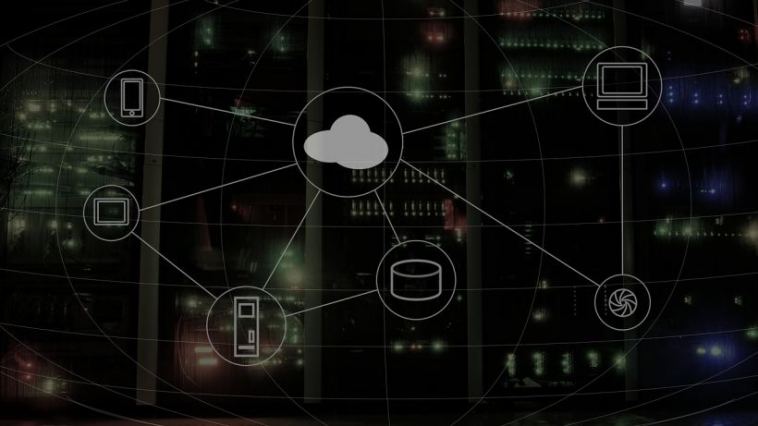- Like
- SHARE
- Digg
- Del
- Tumblr
- VKontakte
- Flattr
- Buffer
- Love This
- Save
- Odnoklassniki
- Meneame
- Blogger
- Amazon
- Yahoo Mail
- Gmail
- AOL
- Newsvine
- HackerNews
- Evernote
- MySpace
- Mail.ru
- Viadeo
- Line
- Comments
- Yummly
- SMS
- Viber
- Telegram
- JOIN
- Skype
- Facebook Messenger
- Kakao
- LiveJournal
- Yammer
- Edgar
- Fintel
- Mix
- Instapaper
- Copy Link
Introduction
Over the past couple of decades, more and more companies have migrated to the cloud.
The cloud — a term used to describe on-demand access to remote computer systems for storage and computing power, without the user having to invest in physical infrastructure themselves — has been a game-changer for all sorts of reasons.
It’s flexible, convenient, reduces the costs of physical hardware, and can greatly streamline workplace workflows. Especially during the “work from home” era that accompanied the pandemic, cloud computing has made it easier for workforces to access files and systems, as well as working collaboratively, while being geographically scattered all over the place. In the age of the cloud, you don’t need to be in the same physical office to use workplace resources; simply log in from anywhere, so long as you’ve got internet access.
With these kinds of benefits, it’s no surprise to hear that cloud migration is at the forefront of many businesses’ strategies. In 2020, as companies were being forced to pivot their operations virtually overnight, upward of 50% shifted their workloads to the cloud. This trend is unlikely to slow down any time soon. But there’s no one-size-fits-all strategy when it comes to moving to the cloud. Instead, you need to select a cloud migration strategy that works for you.
The Six Strategies
There are six main strategies when it comes to migrating to the cloud: rehosting (also known as “lift and shift”), replatforming, repurchasing, refactoring, retiring, and retaining.
#1. Rehosting
In rehosting, all applications, data, and other assets are “lifted” from one location and “shifted” to another. This is done without having to make changes to the migrated assets in questions, making it cheap, speedy, and straightforward, since it means that applications don’t have to be redeveloped from the ground-up — although this relies on assets being compatible with the new environment.
#2. Replatforming
In replatforming, changes are made to the codebase of applications in order to make them cloud-native, while preserving their existing functionality.
#3. Repurchasing
Repurchasing involves discontinuing current legacy systems and switching to using cloud-based alternatives. In many cases with modern applications, this is not necessary because it is possible to transport code to the cloud, or from one provider to the next. But in instances where there are proprietary or certain legacy products in play, repurchasing may be the best approach.
#4. Refactoring
Refactoring involves modifying the entire codebase. Of all the cloud migration options, this is perhaps the most intensive in terms of resources. It means reviewing, then re-architecting, and finally re-coding parts of an application prior to the cloud migration taking place. The purpose is to make certain the asset is entirely compatible with its new target environment. While refactoring may be more costly up front, however, it will frequently offer a good ROI (return on investment) in the long term. Businesses and other organizations often choose this option in scenarios where apps are mission- or business-critical, but cloud migration is essential.
#5. Retiring
Retiring refers to ending support for a certain application and switching it up for a new application that is cloud-native. This is typically done in cases in which assets do not justify how much they cost, thereby making them unfeasible to keep around. To cut costs, security risks, and complexity, enterprises may simply decide to end support.
#6. Retaining
Finally, retaining is the flipside of retiring. When enterprises decide that they want to keep digital assets, even when they are not compatible with a target cloud environment, they might opt for a hybrid cloud strategy. This is done in scenarios whereby a business is heavily invested in a particular on-premise application, which is nonetheless not supported by the cloud environment. Common reasons might involve compliance, security, and others.
Making an Informed Decision
Each of these approaches come with different positives and negatives. Enterprises must make sure they understand what these are so that they can make an informed decision. One area they should make sure to properly consider are the cloud security challenges they may face. Cloud security remains a challenge — and a worry — for many enterprises. Application misconfigurations and weak access controls can be devastating in terms of opening up potential vulnerabilities.
As part of the planning phase, security threats should be addressed in a way that is both transparent and visible. Bringing in the right cyber security solutions can be transformative in this regard.
Tools to protect cloud workloads and stop web application and API attacks is a must, as is ensuring regulatory compliance to areas like PCI and GDPR. In addition, make sure to consider the mitigation of risk with measures that can offer split-second responses in the event of threats to protected data.
Whichever strategy you take when it comes to cloud migration, make sure that security is one of the primary considerations. Your future self will thank you for your diligence.


